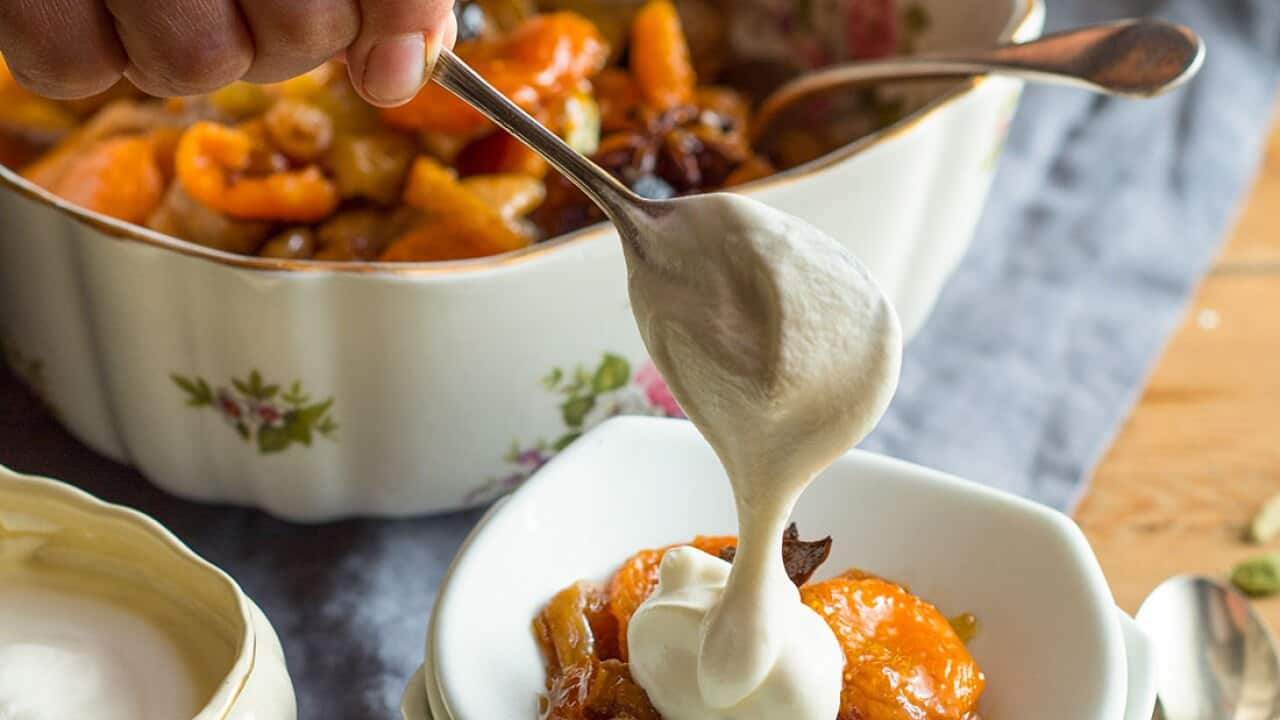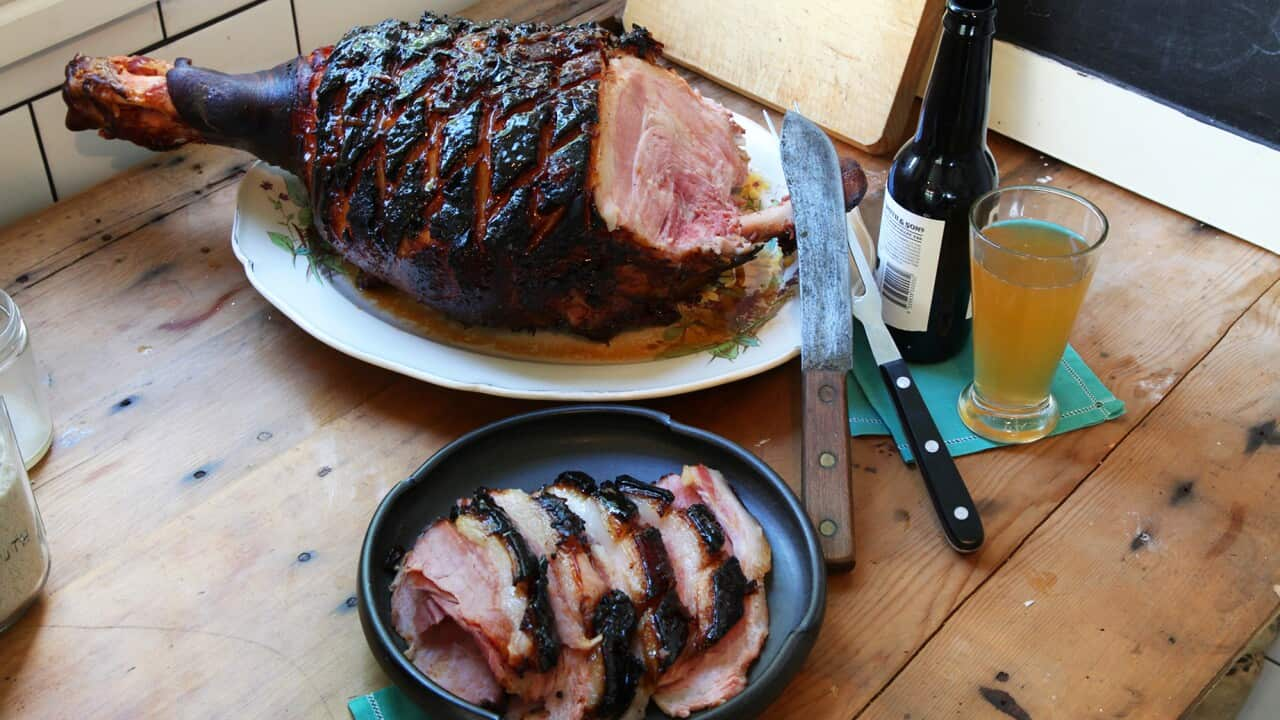From the glorious sweet-zesty tang of a simple Seville marmalade to the deep red delight of a blood orange batch, marmalade is a glorious way to preserve the citrus harvest.
It’s a preserve with a fascinating history that stretches from Portugal to Spain and Italy and across England, while recent developments in countries around the world are redefining what “great marmalade” is. And most importantly, it’s a preserve that’s deeply satisfying to make. “Sometimes people think it's hard, but … once people do it, they realise how relatively quick and easy it is. Marmalade usually takes a bit longer than say, a berry jam, because you're cooking down the fruit, but it's still fairly easy and you get a good yield, which lasts quite a while,” says John Roy, a director of preserving system company , and a keen marmalade maker who’s also been a judge of marmalades and other preserves at the Royal Melbourne Show.
“Sometimes people think it's hard, but … once people do it, they realise how relatively quick and easy it is. Marmalade usually takes a bit longer than say, a berry jam, because you're cooking down the fruit, but it's still fairly easy and you get a good yield, which lasts quite a while,” says John Roy, a director of preserving system company , and a keen marmalade maker who’s also been a judge of marmalades and other preserves at the Royal Melbourne Show.

There are many variations on how to make marmalade, but they all start with good fruit. Source: Jay Short via Unsplash
To help you nail your next batch of this zesty preserve, we’ve gathered some great tips from Roy and other expert marmalade makers.
Start with good fruit
“If you want to make a great wine you need great fruit and you need to take care. It’s the same if you want to make a great marmalade, you need really good fruit,” says world champion marmalade maker Reuben Kooperman. “My wife Deborah grows most of the fruit I use, and I have a friend who grows tangelos.” Picking it fresh and cooking it on the same days is especially good, says the Perth preserve maker, who has won numerous gold medals for his marmalades. Last year he won two categories at the Perth Royal Show and three gold medals and championship marmalade at the Australian Marmalade Awards; earlier this year he won three more golds at the World Marmalade Awards. “I've had a fantastic 12 months of marmalade,” says Kooperman, the Honorary Consul-General of Thailand for Western Australia.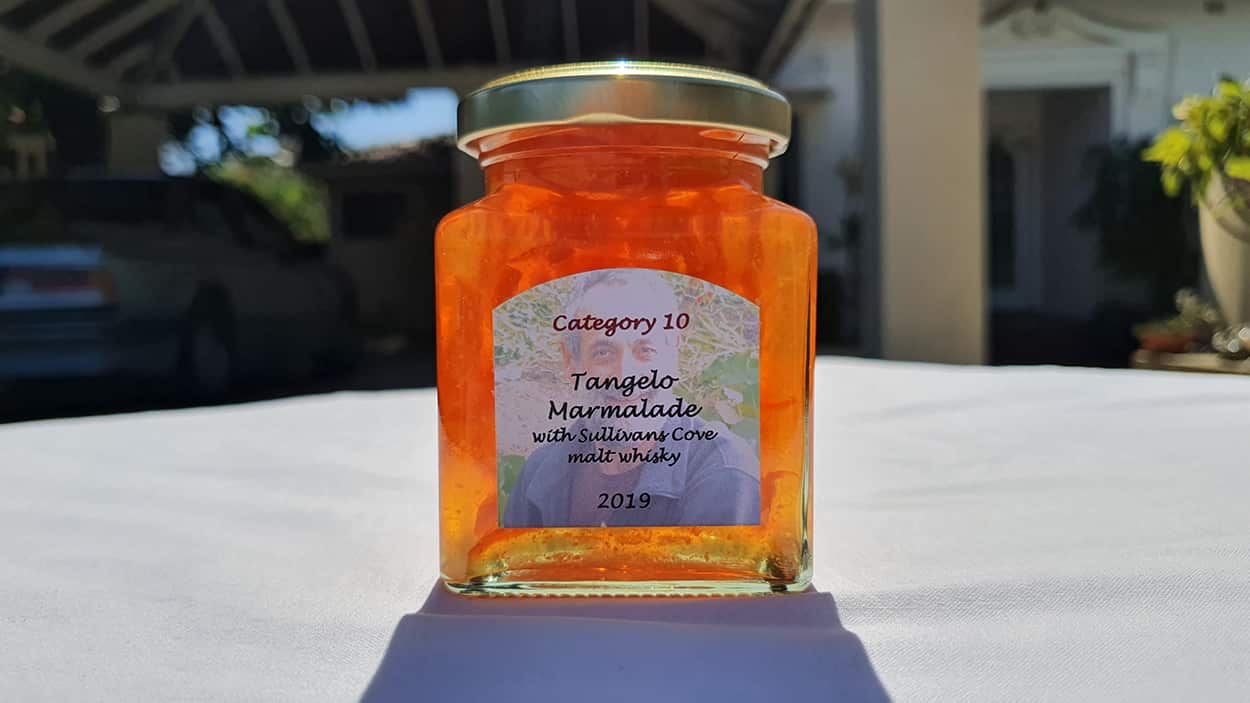 Kooperman has been preserving for more than 30 years.
Kooperman has been preserving for more than 30 years.

This is the marmalade that won first prize at the 2019 Perth Royal Show, a gold medal and the Championship Award at the 2019 Australian Marmalade Awards, and a gold medal and Category Award for Merry Marmalade at the 2020 World’s Original Marmalade Awards in Cumbria. Source: Reuben Kooperman
“My dad was a jam-maker, not a marmalade maker, but I used to watch him making jam and it's a bit of a tradition in the family to do preserves, going back to my grandparents and my dad, and then I took it up in the mid-'80s.”
Marmalade is his particular passion. He loves the challenge of crafting his award-winning preserves – “and I like to eat marmalade, I pretty much eat it every day. And I make it for family and friends,” he says. (You can find his recipe for Seville orange, tangelo and Cointreau marmalade .)
You can use all kinds of citrus in marmalade making. The choice of fruit will influence the sweet-sharp balance, and the look of your preserve - blood oranges make a particularly spectacular batch, as O Tama Carey's shows. Citrus also vary in their natural tendency to 'set' when made into marmalade.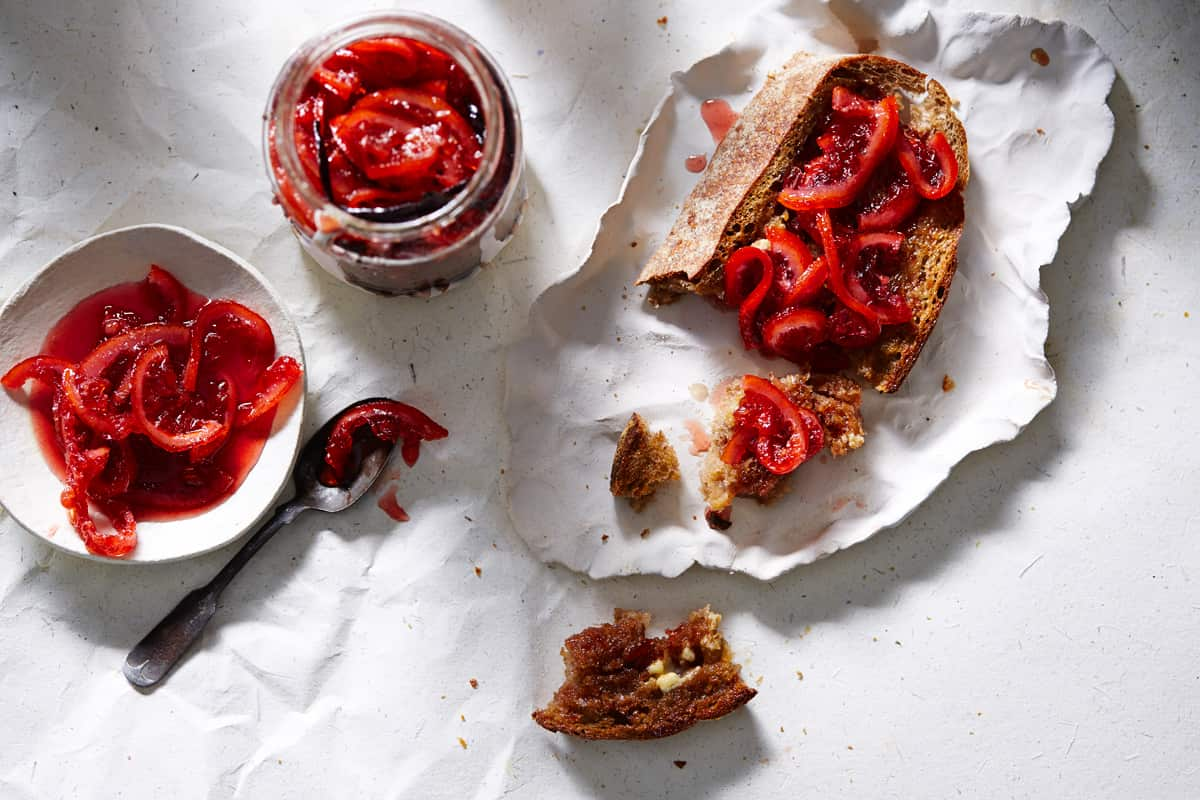

Blood orange and vanilla marmalade Source: Benito Martin
Pectin is key
Pectin is a substance found in apples, citrus and other fruits that helps jams, jellies and marmalades set. Some fruits, such as lemons, have higher levels than others, which is why lemons make a great marmalade, and lemon juice and zest is sometimes added to marmalades made with other citrus.
“Don't use ordinary oranges like Valencia oranges because they're not as high in pectin,” advises another award-winning marmalade maker, Cathy Armstrong, maker of the Princess Pantry range of preserves, confectionery and other seasonal treats, who also teaches occasional preserve-making classes at in the Blue Mountains.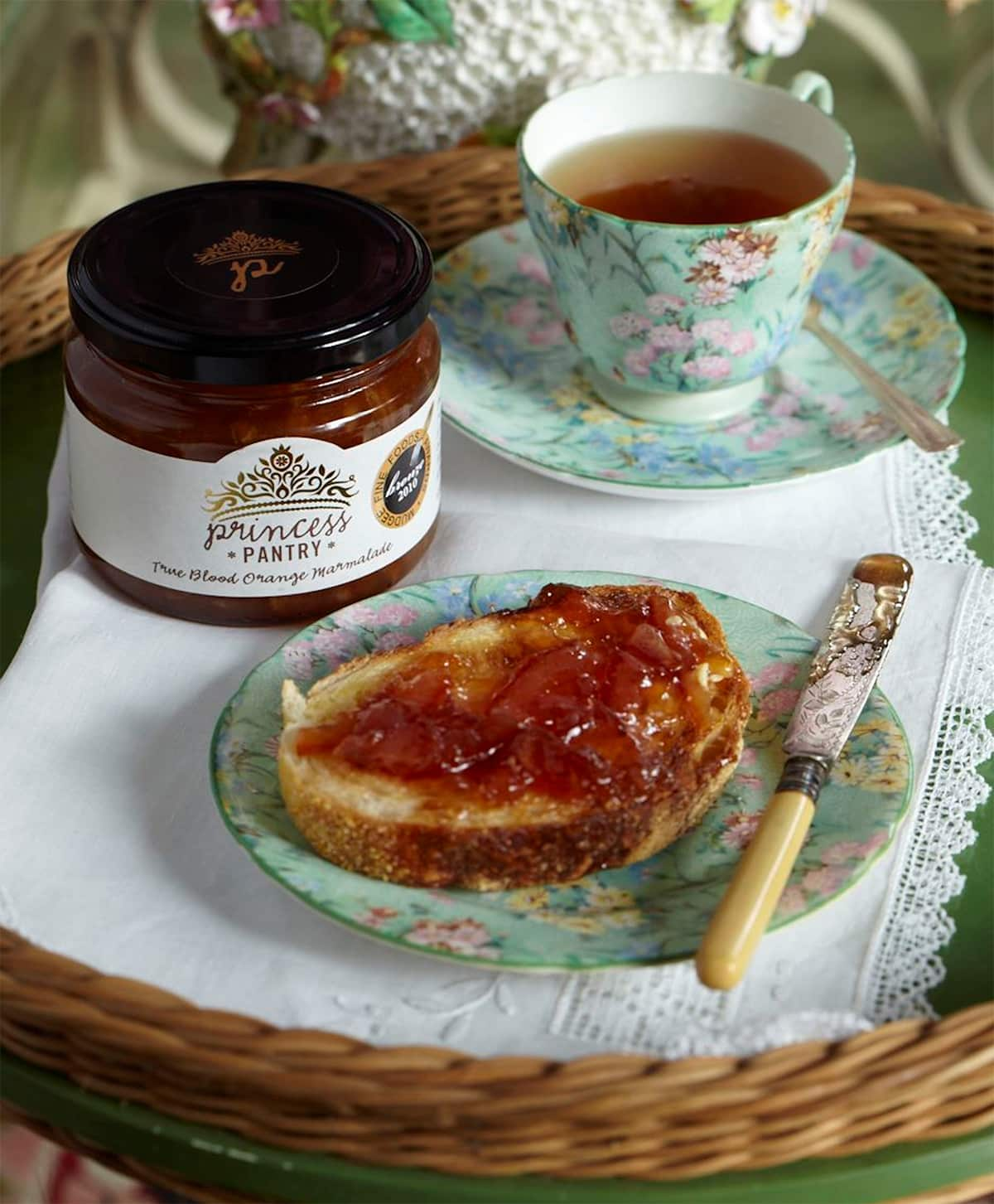 “Mandarin marmalade is harder to make; mandarins don't have as much pectin. Lemons are really good. A lemon and ginger marmalade's a really nice one to make, lots of pectin, so that one will set easily. Ruby grapefruit’s quite an easy one to make as well. And of course, Seville oranges. Seville is the classic marmalade orange, if people can get their hands on them. That's kind of the Rolls Royce of marmalade.”
“Mandarin marmalade is harder to make; mandarins don't have as much pectin. Lemons are really good. A lemon and ginger marmalade's a really nice one to make, lots of pectin, so that one will set easily. Ruby grapefruit’s quite an easy one to make as well. And of course, Seville oranges. Seville is the classic marmalade orange, if people can get their hands on them. That's kind of the Rolls Royce of marmalade.”

Cathy Armstrong's True Blood Orange Marmalade Source: Michele Aboud
Her Princess Pantry range (contact her directly to find out where they are sold, and to see when she is teaching more preserving classes) includes three marmalades: ‘Ruby's ruby grapefruit marmalade’, ‘Sweet little mandarin marmalade’ and ‘True blood orange marmalade’.
“I add lemon juice to every marmalade no matter what the flavour is,” Armstrong adds. “It gives the flavour an edge because sometimes it ends up just tasting like fruit and sugar. As soon as you add lemon to it, it makes the flavour more complex.”
Limes another fruit with good pectin, and make a lovely sweet/tart preserve - try it in Paul West's .

Lime ginger marmalade Source: Sharyn Cairns
The basics
Marmalade making is based on using the right ratio of fruit, water and sugar; cooking the fruit and water on a low heat until the fruit is softened; adding and dissolving the sugar; then cooking the mixture to setting point. (Armstrong recommends a wide pot with a large surface area, rather than a narrow tall pot, as it will help speed up the cooking and reduce the chance of a dark, overcooked marmalade).
“It can vary, but the rule of thumb for marmalade is usually that for every kilo of fruit, you double the water – so if it’s one kilo of fruit, you use two of water. And then you use 1.5 times the amount of sugar,” says Armstrong.
“Say we’re using one kilo of ruby grapefruit, then you know you’ll want 1.5 kg of sugar and two litres of water.”
“For the fruit, use a really sharp knife or a good mandolin with a guard, and slice your fruit finely – the whole fruit. So I take a grapefruit, I cut it in half so that I've got a flat surface and I can sit it on my board, and then I slice it with a knife, really, really finely.”
For those who like a chunkier style, it's still good to try to slice the fruit evenly.
Save the seeds for later, and put the sliced fruit in the water. At this point, you can either start cooking or soak the fruit. “You can let it soak at room temperature in the wintertime, or put it in the fridge if you need to soak it overnight,” Armstrong says. Soaking will shorten the time required for the first stage of cooking, where you’re aiming to soften the fruit. “Put it on a very gentle heat with a lid on, or foil tightly sealed over the top of it. You don't want all the water to evaporate off it, but you want the skin to soften, so do that until you can take a piece of skin out of that pot - obviously, it's going to be really hot so you get it out with a pair of tongs - And then you should be able to smoosh the skin between your fingers,” Armstrong says.
Be patient at this stage, says Roy.
“A lot of people, when they make marmalade for the first time, think after 15 minutes it will be cooked enough but when you try to get a set, it won’t. It really is a matter of following the recipe properly and cooking down your fruit so it's nice and soft.”
As Sally Courtney says in, the thickness of the peel and how thinly you slice the fruit will vary how long this stage takes.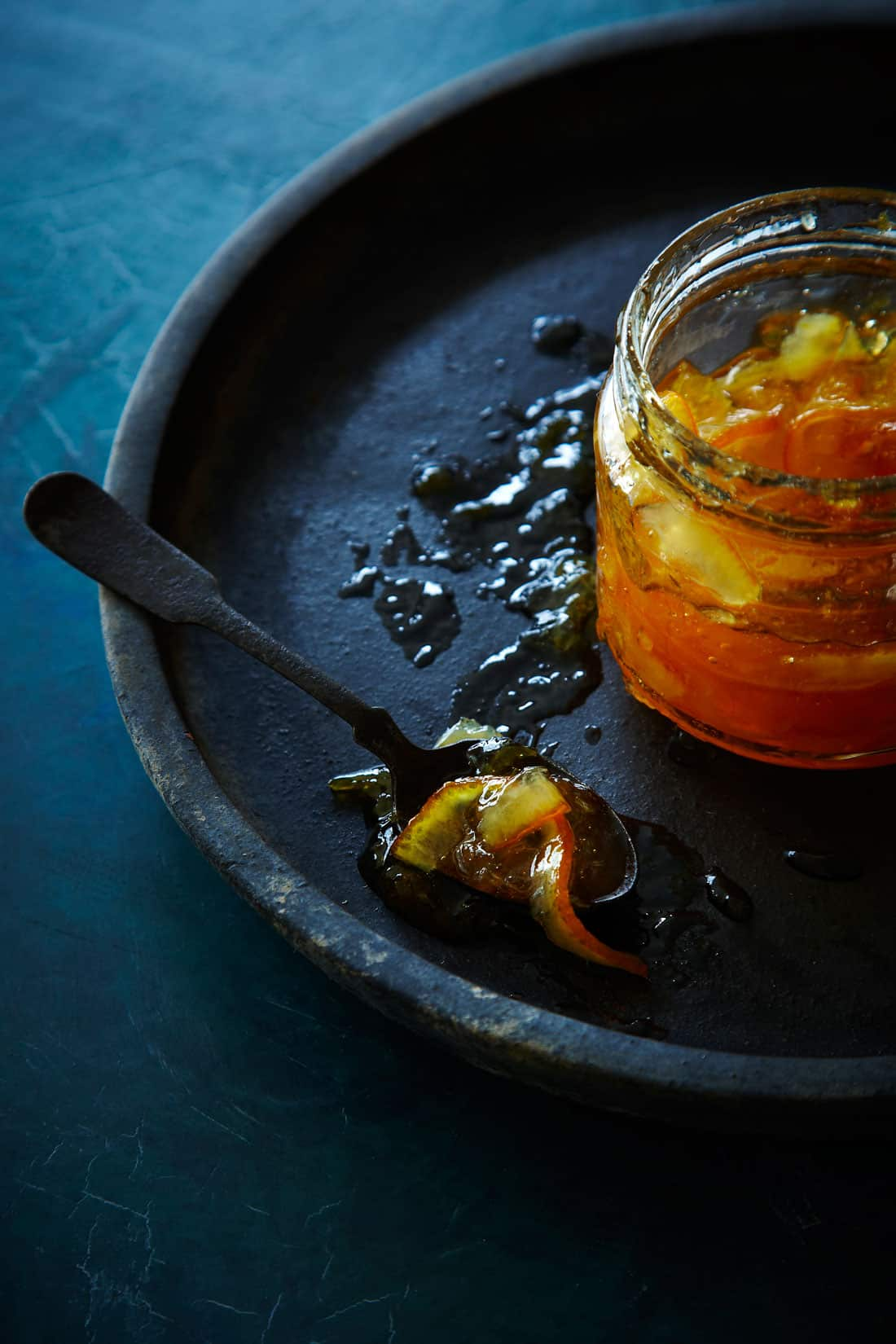 Next, if you’re adding lemon juice, zest and juice the lemon, and save the seeds. “Put all the seeds saved from the grapefruit, with the lemon, seeds in a little muslin pouch, and put it in the pot, along with the lemon juice,” Armstrong says. “For a kilo of fruit, I’d probably add a half cup of lemon juice.”
Next, if you’re adding lemon juice, zest and juice the lemon, and save the seeds. “Put all the seeds saved from the grapefruit, with the lemon, seeds in a little muslin pouch, and put it in the pot, along with the lemon juice,” Armstrong says. “For a kilo of fruit, I’d probably add a half cup of lemon juice.”

Sally Courtney's orange marmalade Source: Petrina Tinslay
”Then add the sugar. You've still got it on a low temperature because you want the sugar to dissolve into the fruit before you start boiling it hard. So keep stirring it. And then at some point, you'll notice that the heaviness of the sugar you can feel on the bottom of the pan is no longer there and it'll look as though it's dissolved into the fruit. Then you increase the heat to high, and you boil it hard, stirring it. You don't have to stir it constantly, but don't go off into another room and do another job. Stay there with the marmalade, keeping an eye on it.
Gradually it will start to look bubbly and thicker, as it moves towards a setting consistency.
Setting point
There’s nothing more disappointing than pouring hot marmalade into jars … and then discovering, when it cools, that you’ve made a citrus sauce (although that can be delicious on pancakes or as a ). The key is gauging when the boiling marmalade has reached setting point.
Kooperman recommends a sugar thermometer. “Keep trying things. Don't be too disappointed if your [first] marmalade doesn't set. Buy a sugar thermometer, that's probably my biggest tip. Getting marmalade to set seems to be the thing that is the most difficult for people, and I find that that using a sugar thermometer is the best method of knowing whether a marmalade is set or not.”
The other common method is the wrinkle test, which is what Armstrong uses: “Put a teaspoon of marmalade onto the saucer, put it in the fridge and then when it’s cool, run your finger through the surface. If it wrinkles, and it’s starting to feel really thick, and you have to push your finger through it, that's telling you that the marmalade will set.”
We suggest making this even easier by putting two saucers in the freezer when you add the sugar to your fruit and start boiling. Then they’re ready for testing when you need them.
Pour into sterilised jars, cover and leave to set.
Store in the dark
“The secret is a cool dark storage spot,” says John Roy.
“If you put it out on a kitchen shelf, even though it may not be in the sun, just with the light, it's going to alter the colour. Put it in a dark spot and then marmalade stays nice and fresh, zesty and vibrant for quite some time.”
Roy says, in theory, an opened jar of jam or marmalade doesn’t need to go in the fridge, since the sugar acts as a preservative. “If your jam's made properly, it doesn't need to be kept in the refrigerator. But most jams that you buy now suggest that, because they know that people perhaps double-dip, they’ll go back into a jar of marmalade and leave bits of toast or butter.”
A world of options
In Australia, we often think of marmalade as a classic English breakfast spread, and England has a long history of excellent marmalade making - "it appears quintessentially English, it's like a breakfast item we have to have!" says Ainsley Harriott. But as he explains in a marmalade tasting in , it's actually a far more global spread.
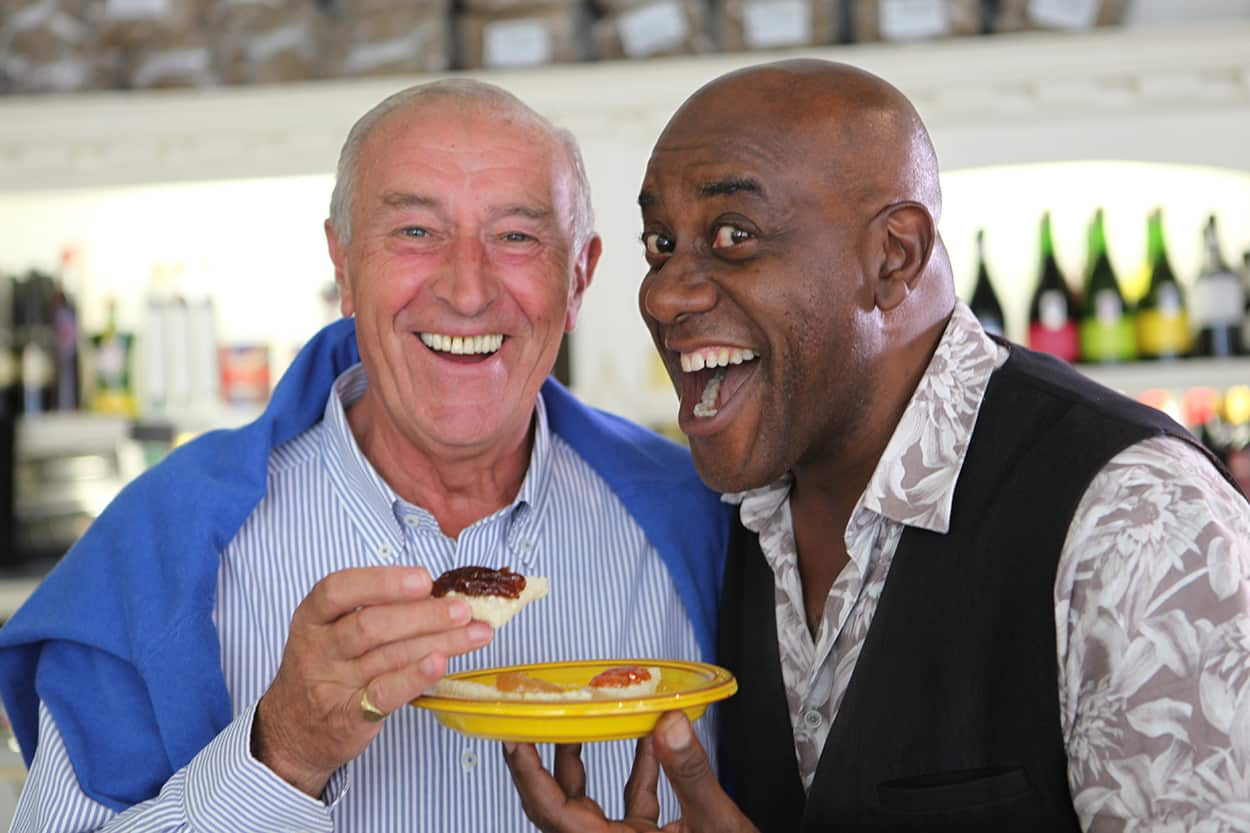
Len Goodman and Ainsley Harriott discover how varied marmalade can be Source: Len and Ainsley's Big Food Adventure
As C. Anne Wilson wrote in The Book of Marmalade, English marmalade owes its name to Portugal. Thick mixtures known as marmelada were shipped from Portugal to England as early as 1495, although originally this was a quince paste, not the citrus preserve we know today (the name comes from marmelo, a Portuguese word for quince; similar preserves were also shipped from Italy and Spain). It then became a term used for many kinds of fruit preserves, and still is, in various forms, in some European and Scandinavian countries. Recipes for modern-style citrus marmalade began to appear in England , but in a fascinating reflection of wider history, today’s marmalade has also been taking on a more global glow.
As a patron and judge of the World Marmalade Awards, expat Australian baker and food writer Dan Lepard has seen interesting changes in the way the world is making marmalade. “We’re much less frightened by a lack-of-set, and much more concerned that the sugar quality and boiling time (for home-made at least) respects the natural sweetness and flavour of the fruit,” the London-based keen cook and author says. “Over the 15 years of the we kept encountering entries from other countries with quite different aims and values - less sugar, more acidity, more natural fruit and different unknown (to us) citrus fruit, bright colours like green, yellow, red, straw, rather than caramel - and quite early on, say 6-7 years ago, we had to think about how we incorporate diversity into our judging, and that realisation became exciting. So ‘great marmalade’ can be many different things.” (Find Lepard’s thick-cut Seville marmalade recipe, which he describes as “rough and full-bodied but utterly delicious”, , or give a worldly flavour a whirl with Shane Delia's Moorish-influenced .)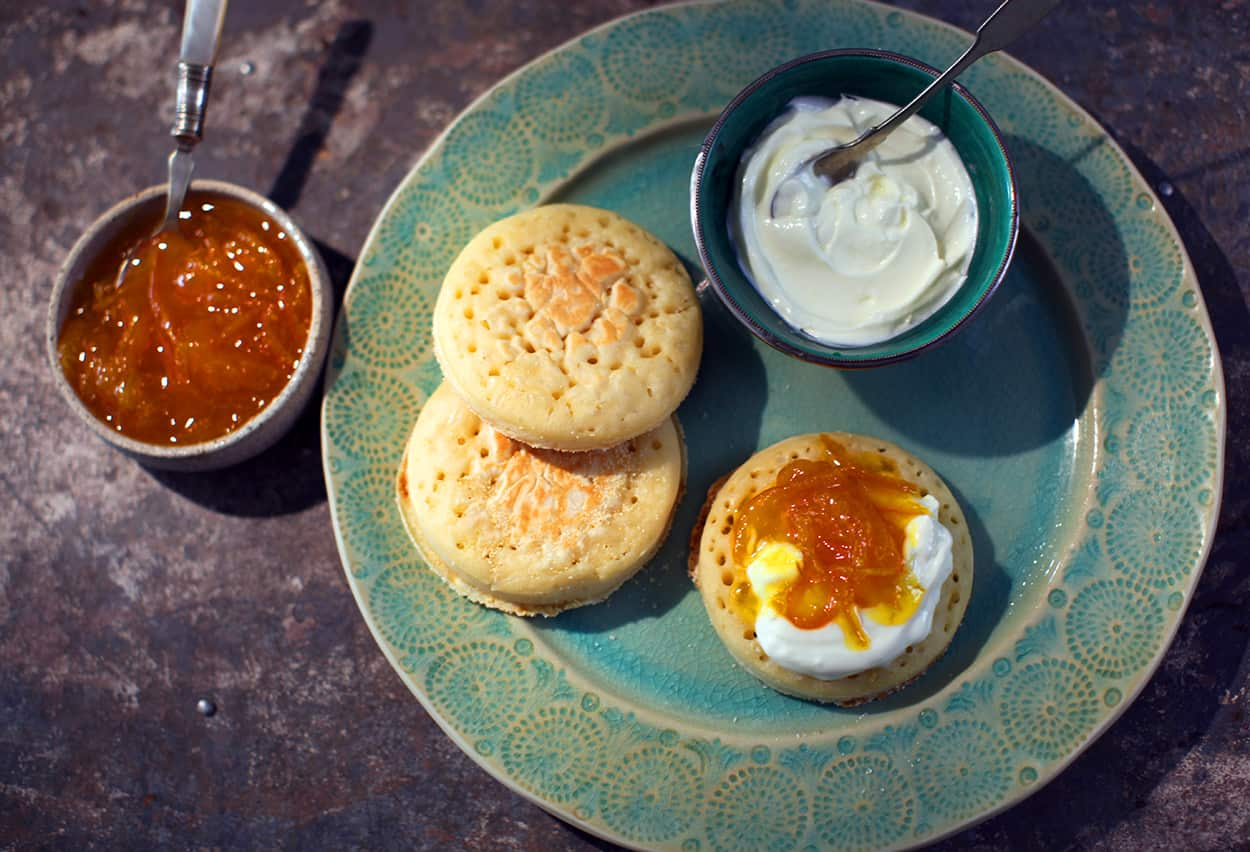 This year, the World Marmalade Awards attracted more than 3000 entries from 42 countries; ranged from a Japanese marmalade made with tachibana, an endangered citrus, to a savoury-leaning spread by a Czech company that includes lemongrass and basil, showing that marmalade can have endless variations.
This year, the World Marmalade Awards attracted more than 3000 entries from 42 countries; ranged from a Japanese marmalade made with tachibana, an endangered citrus, to a savoury-leaning spread by a Czech company that includes lemongrass and basil, showing that marmalade can have endless variations.

Moroccan crumpets with clementine marmalade Source: Shane Delia's Moorish Spice Journey
What you make is totally up to you. Grab your fruit, pot and wooden spoon and go ‘spread’ the marmalade love! (A final tip from the SBS Food team: make lots of smaller jars rather than a few big ones, so it’s easier to share!)
Join Ainsley Harriot and Len Goodman for a taste of English marmalade in Len and Ainsley's Big Food Adventure:


